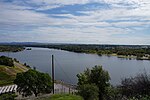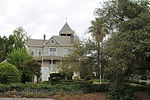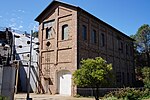Glenn station
California railway station stubsFolsom, CaliforniaRailway stations in the United States opened in 2005Sacramento Regional Transit light rail stationsTram stubs
Glenn station (also known as Glenn/Robert G Holderness station) is a side platformed Sacramento RT Light Rail station in Folsom, California, United States. The station was opened on October 15, 2005, and is operated by the Sacramento Regional Transit District. It is served by the Gold Line. The station is located near the intersection of Glenn Drive and Folsom Boulevard. It serves primarily as a commuter stop, as it features a mid-sized parking lot. Sacramento Regonal Transit plans to add a second track to the station between Fall 2023 and Summer 2024.
Excerpt from the Wikipedia article Glenn station (License: CC BY-SA 3.0, Authors).Glenn station
Folsom Parkway Rail Trail, Folsom
Geographical coordinates (GPS) Address External links Nearby Places Show on map
Geographical coordinates (GPS)
| Latitude | Longitude |
|---|---|
| N 38.663055555556 ° | E -121.18361111111 ° |
Address
Glenn/Robert G Holderness
Folsom Parkway Rail Trail
95662 Folsom
California, United States
Open on Google Maps







